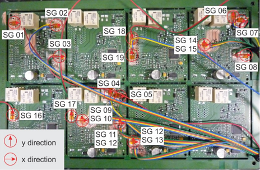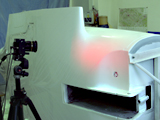Special testing
- Zero G Landing ( 1500 kg Phootprint Lander)
- Space mechanisms testing ( stiffness, load, deformations, vibrations )
- Thermal-vacuum testing of special components



Universal test facility 12x12x5 m / 12 500 kg crane handling

Clean room testing at Frentech aerospace

















